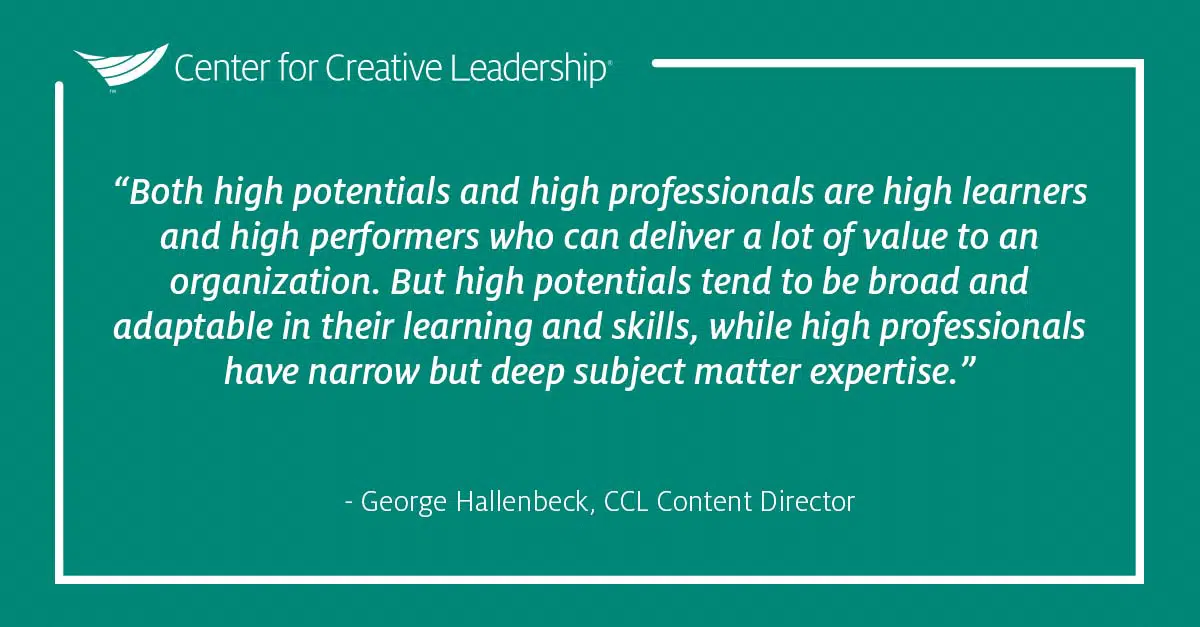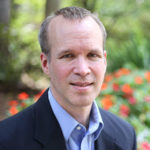Take a Fresh Look at Your Approach to Top Talent
High-potential talent is rare and valuable. These emerging leaders and thinkers are the change-makers and problem-solvers that your business and customers desperately need. But many common systems and policies aimed at developing high-potentials are outdated, impersonal, and may even backfire.
Your organization’s ability to develop, retain, and engage skilled, valuable employees is critical to managing change and operating through continual uncertainty. And the people we call “talent” or “the leadership pipeline” bring their perspectives, preferences, and experiences to the process, too.
Employers need to understand and appreciate what’s going on with their top talent if they expect to still have that talent 2, 5, and 10 years down the road. Pay attention to “the view from inside the pipe” to increase engagement and retention of high-potential talent.
Consider whether your top talent wants to be formally recognized as high-potential talent, what they expect in terms of investment in their growth and development, how they feel about their status as high potentials, and whether or not they expect to be involved in developing others.
From there, you may want to evaluate the policies and processes that affect your high potentials to identify what’s working well and what changes could be made to better align your talent management efforts with the view from the pipe. Make sure your leaders understand the difference between high-potential, versus high-professional, talent.
What’s the Difference Between “High Potential” and “High Professional”?
Be careful not to confuse your high potentials with your high professionals, also known as high performers. This is a risk “especially in organizations that tend to put a premium on technical skills,” says CCL’s George Hallenbeck.
“Both high potentials and high professionals are high learners and high performers who can deliver a lot of value to an organization,” says Hallenbeck, “But high potentials tend to be broad and adaptable in their learning and skills, while high professionals have narrow but deep subject matter expertise.”
Your high potentials have tremendous learning agility, which is why it’s often said that great leaders are great learners.
Questions to Help You Assess Your High-Potential Development Programs
A Talent Diagnostic
If you’re ready to take a fresh look at your organization’s approach to high-potential talent, start by conducting a talent diagnostic for your organization, department, or function. These 20 questions will help you match the talent you have with the needs of the organization.
Your answers — or the issues they bring up — can help you set direction as you seek to identify, develop, and retain key talent.
1. Assess
- How do we accurately identify high potentials?
- How do we determine who might be a high potential?
- How do we avoid false positives?
- What is it exactly that we are trying to measure when assessing potential?
- How many different ways do we measure potential?
- How often do we measure it?
- We’ve measured what we wanted to — now what?
2. Challenge
- How do we develop high potentials?
- Do we develop high potentials differently than others? If so, how?
- What are we developing them for?
- Do we develop their strengths, their needs, or both?
- How much challenge do we expose them to?
- Are some development experiences better than others?
- How do we evaluate the success of development efforts?
- Do we allocate more resources to developing high potentials than others?
- A high potential has successfully completed a developmental experience — now what?
3. Support
- Who’s responsible for a high potential’s development?
- Do we take a sink-or-swim approach with high potentials?
- What happens if a high potential fails?
Question No. 20 should be asked over and over again — by you and by each high-potential employee. It’s the clarifying question that can re-focus and re-energize an employee’s development. It’s the question that can help you figure out which experiences and relationships are essential. It’s the underlying point of development.
- Potential for what?
“Potential for what? is one of the most important questions you can pose when considering high potentials,” says Hallenbeck.
“Potential comes in many forms and, therefore, can go in as many directions. Knowing the leadership development journey you intend to take your talent on is a critical component to success.”
In closing, as you think about what matters most in high-potential development, also consider:
- Does your organization understand the difference between high potentials and high professionals?
- Have you put any rigor into how you communicate to people their high-potential status, or do you leave it to chance?
- What degree of formality and transparency is appropriate for the culture and context of your organization?
- How much more investment do high potentials expect from the organization over the average performer?
- What efforts do you make to ensure your high potentials feel recognized and valued?
- How many high potentials did you lose over something that could’ve been prevented?
- Do you understand the contributing factors that led to why a high potential has left your organization?
- How do you recognize and catalyze the ability of a high potential to be a developer of talent?
- In what ways are leaders at all levels held accountable for developing talent?
Ready to Take the Next Step?
Ensure your high-potential development equips your top talent with critical leadership skills and needed competencies. Partner with us for individualized leadership development for your high-potential employees.









